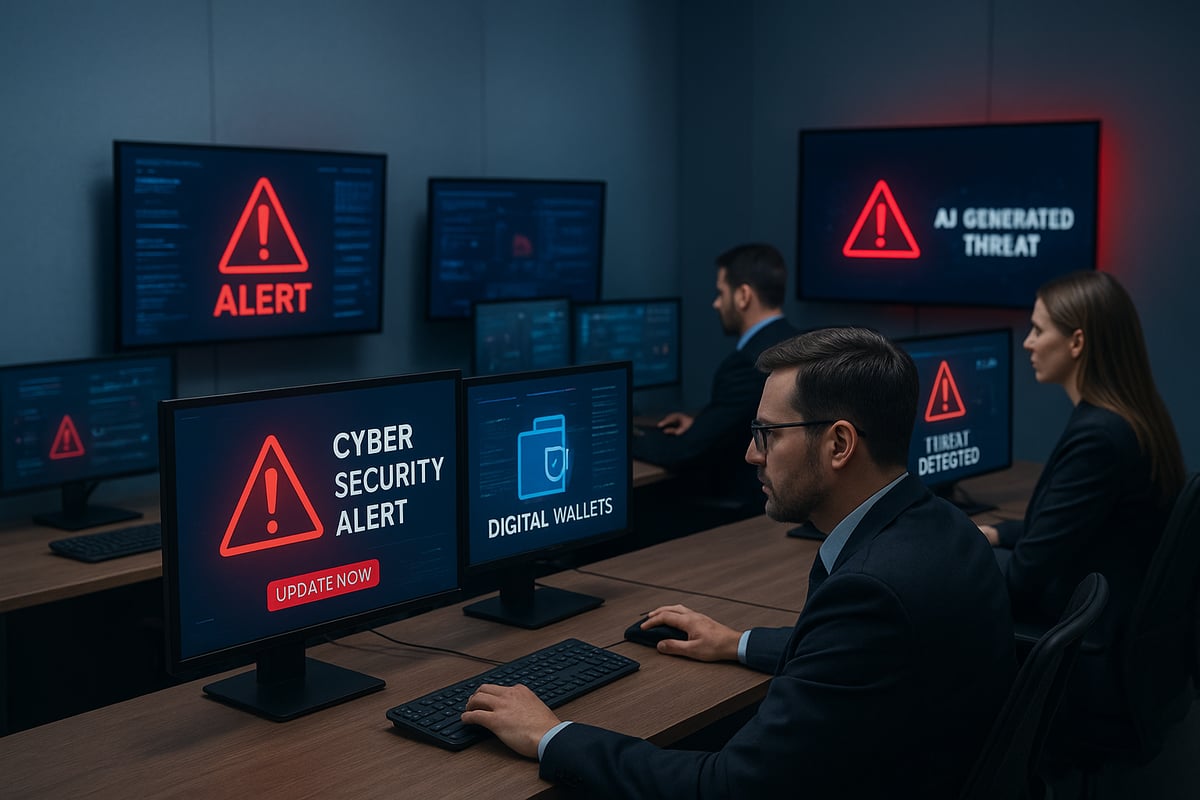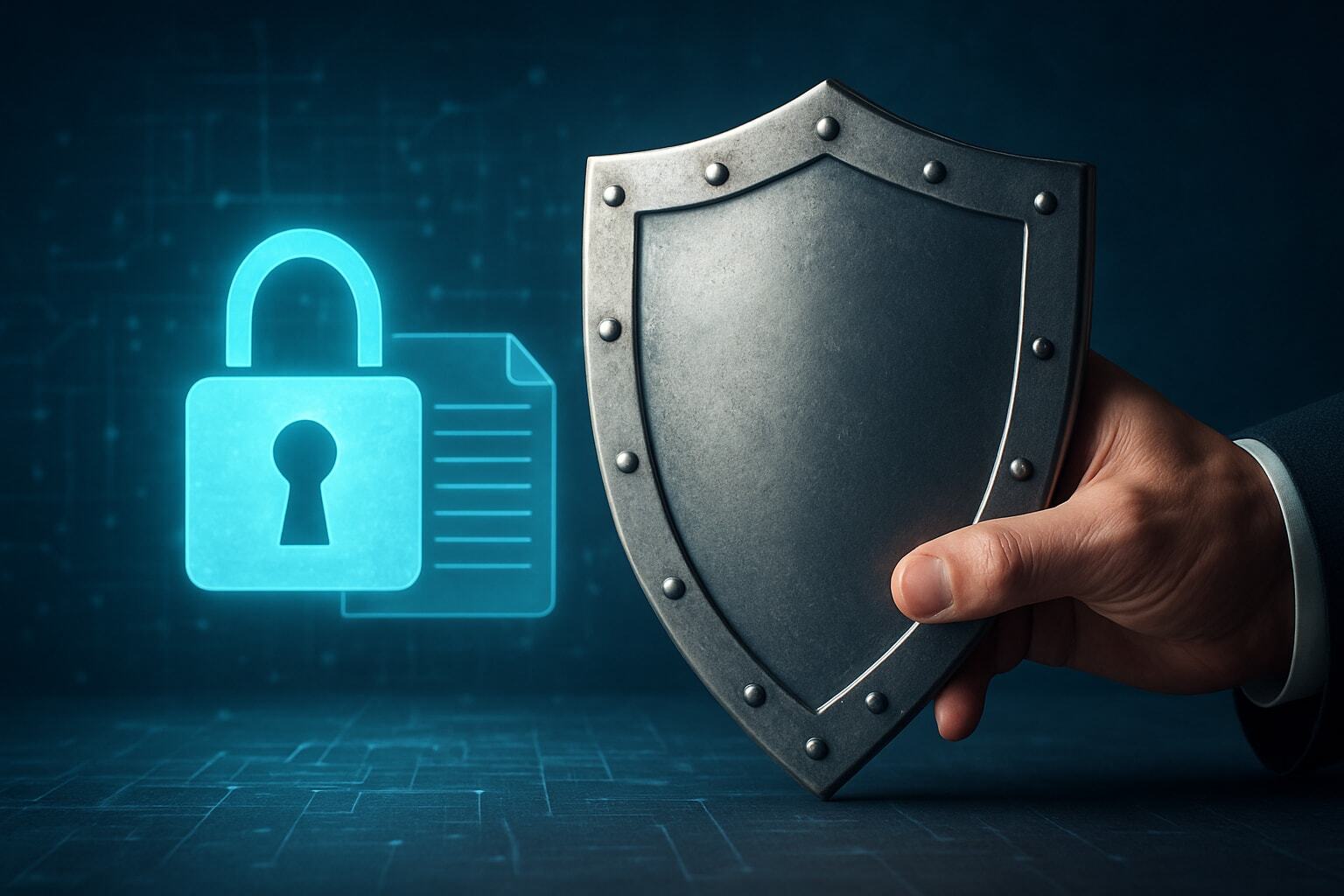Guide to Protecting Digital Assets in 2025
In 2025, digital assets are at their highest value—and most exposed to risk. Last year alone, billions were lost to digital theft and data breaches, highlighting the urgent need for protecting digital assets. From cryptocurrencies and cloud files to social media and intellectual property, the range and worth of these assets continue to grow.
This guide provides individuals and organizations with the knowledge and tools to stay ahead of evolving threats. Discover the latest risks, asset types, security strategies, legal essentials, and actionable steps to protect your digital legacy. Take control now for peace of mind and lasting security.
Understanding Digital Assets in 2025
Digital assets have become central to both personal and professional life. In 2025, the variety and value of these assets keep expanding, making them a primary target for cybercriminals and a top priority for anyone interested in protecting digital assets. Understanding what qualifies as a digital asset, the types at risk, the reasons behind their targeting, and the consequences of inadequate protection is the first step in building a secure digital future.

Defining Digital Assets
Digital assets are any forms of value stored electronically. These can include cryptocurrencies, online bank accounts, cloud-stored documents, social media profiles, and intellectual property like digital art or patents. The global market value of digital assets is projected to surpass $20 trillion in 2025, reflecting their growing importance.
Both individuals and businesses now find their digital and physical assets increasingly intertwined. For a comprehensive breakdown of these concepts and examples, you can explore What Are Digital Assets for further insight. Recognizing and cataloging these assets is a crucial early step in protecting digital assets in today's world.
Types of Digital Assets to Protect
Protecting digital assets requires awareness of the many forms they take. Financial assets include crypto wallets, online banking, and investment accounts. Personal assets range from photos and emails to social media profiles and cloud storage. Intellectual property covers digital art, music, and confidential business information.
Other valuable assets are loyalty points, airline miles, and digital gift cards. Blockchain-based assets like NFTs and smart contracts are also increasingly significant. Understanding the diversity of these assets helps prioritize security and ensures all areas are covered when protecting digital assets.
Why Digital Assets Are Increasingly Targeted
The rise in cybercrime has made protecting digital assets more urgent than ever. Cybercriminals use ransomware, phishing, and social engineering to target valuable digital holdings. The value of digital assets often surpasses traditional assets due to their liquidity, anonymity, and global accessibility.
Vulnerabilities such as decentralization and inconsistent regulation create more opportunities for attacks. In fact, digital asset cyberattacks have increased by over 30 percent year-over-year. These factors make protecting digital assets a top priority for everyone with an online presence.
The Consequences of Poor Digital Asset Protection
Failing to focus on protecting digital assets can lead to devastating outcomes. Financial losses may include irretrievable funds or stolen identities. On a personal level, losing access to photos or private messages can be emotionally distressing.
Legal complications may arise, resulting in inheritance disputes or regulatory penalties. For example, high-profile digital asset thefts have left victims facing years of litigation and unrecoverable losses. Proactively protecting digital assets can prevent these costly and stressful consequences.
Evolving Threat Landscape: Risks to Digital Assets in 2025
The landscape for protecting digital assets in 2025 is more complex and dangerous than ever. Attackers use advanced technology and creative tactics to exploit vulnerabilities. Let’s break down the main threats you need to watch.

Sophisticated Cyber Threats and Techniques
Cybercriminals are leveraging sophisticated tools to breach digital defenses. Today’s attackers target everything from crypto wallets to online accounts.
Common methods include:
- Advanced hacking: Breaching wallets, attacking cryptocurrency exchanges, bypassing cloud security.
- Phishing and social engineering: Sending fake emails or building convincing websites to steal credentials.
- Deepfakes: Using AI to mimic voices or faces for fraudulent access.
Recent data shows that over 60% of digital asset breaches stem from phishing attacks. As more people invest in digital assets, protecting digital assets from these evolving threats is crucial.
Insider Threats and Human Error
Not all threats come from outside. Insiders, such as employees or family members, can misuse access, either intentionally or by accident.
Examples include:
- Sharing sensitive logins with unauthorized people.
- Accidentally sending confidential files to the wrong recipient.
- Insider thefts at crypto exchanges, leading to millions in losses.
Human error remains a leading cause of digital asset loss. Protecting digital assets requires clear policies, regular audits, and strict control of who can access what information.
Emerging Risks: AI, IoT, and Quantum Computing
New technologies bring new risks. AI-driven attacks automate phishing and malware, increasing their scale and effectiveness. IoT devices, from smart home gadgets to business sensors, can serve as unexpected entry points for attackers.
Quantum computing poses a future challenge, as it could break traditional encryption methods. According to AI-driven cyberattacks surge in 2025, state actors and cybercriminals are increasingly using AI to launch faster, more targeted attacks. Staying ahead means adopting quantum-resistant encryption and regularly updating all connected devices when protecting digital assets.
Regulatory and Compliance Risks
Laws and regulations around digital assets are changing rapidly. Failure to comply can result in fines, asset freezes, or legal disputes.
Key regulatory risks include:
- Not keeping up with privacy laws or industry standards.
- Failing to document digital estates, which can delay inheritance or asset transfer.
- High-profile cases where lack of compliance led to significant penalties.
To avoid these pitfalls, protecting digital assets should include working closely with legal and compliance experts. Stay informed about changes in your region to ensure all assets remain secure and accessible.
Step-by-Step Guide to Protecting Your Digital Assets
In 2025, protecting digital assets requires a proactive, structured approach. With threats constantly evolving, following a clear set of steps can help you safeguard your financial accounts, personal memories, and intellectual property. This guide breaks down the process into eight essential actions, making it easier to secure everything from cryptocurrency wallets to cloud-stored documents.

Step 1: Inventory and Categorize Your Digital Assets
Begin by compiling a comprehensive inventory of all your digital assets. This includes financial accounts, online subscriptions, digital currencies, and intellectual property. Use a spreadsheet or a digital asset management tool to list each item, noting access details and importance.
Group your assets by type and value. Prioritizing high-value or sensitive items ensures you focus your efforts where they matter most. This step lays the foundation for protecting digital assets by making sure nothing is overlooked.
Review and update your inventory regularly to reflect new accounts or assets.
Step 2: Implement Strong Access Controls
Use unique, complex passwords for every account. Password managers can generate and securely store these credentials, reducing the risk of password reuse. Always enable multi-factor authentication (MFA) where available, adding an extra layer of security.
Limit access to sensitive information. Only share credentials with trusted individuals when absolutely necessary. By protecting digital assets with robust access controls, you minimize the likelihood of unauthorized breaches.
Regularly update passwords and review account permissions to maintain strong defenses.
Step 3: Secure Storage Solutions
Store your digital assets in secure, resilient locations. For cryptocurrencies and other high-value items, use cold storage options like hardware wallets, which remain offline and out of reach from online attackers.
For documents and media, choose cloud storage providers that offer end-to-end encryption, ensuring only you can access your files. Keep physical backups on encrypted drives or USBs in a locked safe.
Diversifying storage methods is essential for protecting digital assets against both physical and cyber threats.
Step 4: Backup and Redundancy Strategies
Regularly back up your critical files, wallets, and account records. Use a combination of cloud-based and offline backups to ensure redundancy. Set automated backup schedules for important data.
Test your backup restoration process periodically to verify that files can be recovered if needed. This proactive approach to protecting digital assets guards against accidental deletion, hardware failure, or ransomware attacks.
Maintain at least one backup in a separate, secure location for optimal resilience.
Step 5: Monitor and Update Security Measures
Establish continuous monitoring for unauthorized access or suspicious activity on your accounts. Many platforms offer alerting tools to notify you of login attempts or changes.
Keep all software, firmware, and security protocols up to date. Cyber threats evolve rapidly, so regular updates are crucial for protecting digital assets from newly discovered vulnerabilities.
Schedule periodic reviews of your security settings to adapt to emerging risks.
Step 6: Plan for Emergency and Succession Scenarios
Document clear instructions for accessing your digital assets in case of emergency. Designate trusted contacts or digital heirs on major platforms, such as Google, Apple, or social media accounts.
Store instructions, account credentials, and legal documents securely, ensuring they are accessible when needed but protected from unauthorized use. By planning ahead, you guarantee the continuity and protection of your digital assets, even if you are unavailable.
Update your emergency plans as your digital footprint evolves.
Step 7: Educate Yourself and Your Family/Team
Ongoing education is essential for protecting digital assets. Stay informed about the latest cybersecurity threats and best practices through webinars, articles, and training programs.
Conduct simulated phishing exercises to reinforce awareness and response skills. Foster a culture of security within your family or organization by encouraging open discussions about risks and responsibilities.
Regular training reduces the likelihood of costly mistakes and strengthens your collective defenses.
Step 8: Engage Professional Support When Needed
For complex digital estates or high-value assets, consult cybersecurity experts for comprehensive audits. Legal professionals can assist with digital estate planning and ensure compliance with evolving regulations.
Businesses may benefit from managed security services that monitor, detect, and respond to threats in real time. For more strategies on maximizing protection, consider reviewing Maximizing Digital Asset Protection.
Seeking professional guidance is a critical step in protecting digital assets, especially as the threat landscape becomes more sophisticated.
Legal and Estate Planning for Digital Assets
Digital assets are now part of nearly every person’s financial and personal life. As a result, legal and estate planning for protecting digital assets is no longer optional. Instead, it is a necessity for anyone who wants to ensure their legacy, privacy, and peace of mind.

Digital Estate Planning Fundamentals
Including digital assets in wills and trusts is fundamental for protecting digital assets. Legal systems in many countries now recognize digital property, but laws vary widely. For example, platforms like Google and Apple offer legacy contact features that enable designated individuals to access accounts in emergencies.
A comprehensive digital estate plan covers all online accounts, digital currencies, and intellectual property. This approach provides clarity for loved ones and reduces the risk of lost assets. For a deeper dive into these essentials, visit Estate Planning for Digital Assets, which offers practical guidance on safeguarding your digital legacy.
Proper planning not only secures your digital presence but also ensures that your wishes are honored and your heirs are protected.
Appointing Digital Executors and Legacy Contacts
A digital executor is responsible for managing and distributing digital assets according to your wishes. Assigning the right person is key to protecting digital assets, as they will handle everything from accessing accounts to transferring ownership.
Major platforms now allow users to designate legacy contacts or digital heirs. For instance, Facebook and Apple ID users can assign trusted individuals with access rights. Legal documentation, such as a written directive or inclusion in your will, is required for these appointments to be enforceable.
Clearly specifying roles and responsibilities allows your executor to act efficiently and according to your intentions, reducing confusion and potential disputes.
Access, Ownership, and Privacy Laws
Understanding the distinction between ownership and access is critical for protecting digital assets. In many cases, heirs may have the right to inherit an asset but not the legal authority to access the account. Privacy laws, such as GDPR and CCPA, further complicate this process by restricting third-party access to personal data.
Recent studies show that approximately 40% of estates face delays because executors cannot access online accounts. To avoid this, it is vital to keep detailed records and ensure compliance with privacy regulations while planning your estate.
Staying informed about legal changes and platform-specific policies helps you maintain control and compliance over your digital legacy.
Documenting and Communicating Your Digital Wishes
Clearly outlining your intentions for protecting digital assets is essential. Many people create an “I Love You” letter or a legacy document that lists all accounts, passwords (secured appropriately), and specific wishes for each asset.
Best practices include:
- Updating your digital asset list regularly
- Storing credentials in a secure digital vault
- Providing access instructions for trusted contacts
Communicating these wishes with your family or executor ensures everyone understands your plans. Regular reviews and updates prevent confusion and reduce the risk of lost or inaccessible assets.
Avoiding Common Legal Pitfalls
Many people overlook critical steps in protecting digital assets, such as failing to update beneficiary designations or forgetting to add new digital accounts to their estate plan. Outdated information can lead to legal disputes, lost assets, or unintended recipients.
Common pitfalls include:
- Ignoring digital-only assets like NFTs or online-only banks
- Not revising plans after major life changes
- Relying solely on memory rather than written documentation
By proactively addressing these issues, you minimize legal risks and ensure your digital legacy is preserved for future generations.
Advanced Tools and Technologies for Digital Asset Security
The landscape for protecting digital assets is rapidly evolving. In 2025, advanced tools and technologies are essential for safeguarding everything from cryptocurrency to sensitive documents. Let us explore the most effective solutions available today.
Password Managers and Encryption Tools
Password managers are vital for protecting digital assets, as they generate and store complex, unique passwords for every account. Modern solutions use zero-knowledge encryption, meaning only you can access your credentials. This prevents data breaches, even if the provider's servers are compromised.
Top password managers offer features like biometric authentication, secure password sharing, and automatic breach alerts. By centralizing password management, you reduce the risk of human error and credential reuse.
Encryption tools go further by securing files, emails, and entire storage drives. Choose solutions that support end-to-end encryption and regular security updates. Adopting these practices is a foundational step for protecting digital assets in a connected world.
Hardware Wallets and Cold Storage
For cryptocurrencies and other blockchain-based assets, hardware wallets provide unmatched security. These physical devices store private keys offline, away from internet threats. Popular brands include Ledger and Trezor, each offering user-friendly interfaces and robust encryption.
Cold storage means keeping digital assets on devices not connected to the internet, such as USB drives or dedicated hardware wallets. This method drastically reduces exposure to hacking attempts and malware.
A recent study showed a significant drop in crypto thefts among users who switched to hardware wallets. Cold storage is an indispensable method for protecting digital assets against cyberattacks.
Secure Digital Vaults and Conditional Access Solutions
Digital vaults are transforming how families and organizations manage sensitive information. By centralizing documents, credentials, and access instructions, digital vaults streamline both daily access and emergency planning.
Modern vaults offer conditional access, allowing you to set triggers for document release in case of emergencies or incapacity. This feature ensures that only authorized individuals can access your digital legacy when it matters most. For a detailed look at the importance of these solutions, see Digital Vaults for Asset Protection.
Digital vaults play a crucial role in protecting digital assets, providing both organization and robust access controls.
AI-Driven Threat Detection and Monitoring
Artificial intelligence is now a frontline defense for protecting digital assets. AI-powered systems analyze user behavior, detect anomalies, and respond to threats in real time. These solutions can identify phishing attempts, unauthorized logins, and even subtle forms of account takeover.
Automated incident response tools use AI to isolate affected systems and alert users instantly. This rapid reaction minimizes damage and prevents data loss.
As cyber threats grow more sophisticated, integrating AI-driven monitoring is essential for protecting digital assets. AI offers a proactive shield against both known and emerging risks.
Best Practices and Proactive Strategies for 2025 and Beyond
In 2025, protecting digital assets requires more than just basic security tools. Proactive strategies and best practices are essential for staying ahead of evolving threats. Below, discover the most effective ways to safeguard your digital presence, ensure peace of mind, and future-proof your digital legacy.
Consolidation and Minimization of Accounts
Reducing your digital footprint is a powerful step in protecting digital assets. Start by identifying all your online accounts and closing those that are outdated or rarely used.
- Fewer accounts mean fewer points of vulnerability for cybercriminals.
- Consolidate financial, cloud, and social media accounts where possible.
- Executors often face challenges managing excessive digital accounts during estate settlement.
- By minimizing the number of platforms you use, you simplify management and reduce the risk of forgotten, unprotected assets.
Regular Security Audits and Reviews
Routine security audits are vital for protecting digital assets against new and sophisticated threats. Schedule annual or semi-annual reviews to update your asset inventory, check security settings, and verify backup procedures.
- Use professional audit services, especially for high-value portfolios.
- Update all passwords and enable multi-factor authentication.
- Stay alert to new risks, such as those posed by quantum computing threatens current encryption, which may compromise legacy encryption methods.
A thorough audit ensures your protection measures remain strong as technology evolves.
Building a Culture of Digital Security
Fostering a culture focused on protecting digital assets is essential for families and organizations alike. Establish clear security policies and encourage open discussions about digital legacies and cyber risks.
- Educate all members on best practices and potential threats.
- Hold regular training sessions or simulated phishing drills.
- Review real-life case studies where proactive planning prevented disputes or data loss.
A collective approach creates accountability and significantly lowers the risk of costly mistakes.
Staying Informed on Emerging Threats and Solutions
The digital landscape changes rapidly, making it crucial to stay informed for effective protecting digital assets. Subscribe to cybersecurity news, enroll in webinars, and follow updates from trusted industry sources.
- Adapt your strategies to comply with new regulations and technologies.
- Leverage insights from authorities, such as Europol warns of AI-driven crime threats, to anticipate risks from AI and organized cybercrime.
- Encourage ongoing learning within your family or team.
Being proactive about education ensures your asset protection strategies remain ahead of the curve.
How Secure Digital Vaults Enhance Digital Asset Protection
In 2025, secure digital vaults are more than just storage solutions. They are a cornerstone for protecting digital assets, offering advanced features that address a rapidly evolving threat landscape. As cybercriminals become increasingly sophisticated, the need for robust, organized, and accessible digital asset protection has never been greater.
The Role of Secure Digital Vaults in Asset Organization and Access
Digital vaults provide a centralized, encrypted hub for all vital documents, passwords, and credentials. This level of organization is essential for protecting digital assets, especially as individuals accumulate accounts across banks, investment platforms, and cryptocurrencies.
When a crisis strikes, families need quick access to medical records, legal documents, or crypto keys. Secure vaults simplify this process by allowing authorized users to retrieve everything from a single location. The consequences of not having this system in place can be severe, as seen in high-profile incidents like Lazarus Group's cryptocurrency heists, where lack of proper security led to devastating losses.
Conditional Delivery and Emergency Planning Features
One of the most innovative features of modern digital vaults is conditional delivery. This means you can set custom rules for when and how information is released. For example, you might authorize the release of your will or banking credentials only in the event of incapacitation or death.
These planning tools support protecting digital assets by ensuring that only trusted individuals gain access at the right moment. They eliminate the risk of premature disclosure and allow for seamless inheritance or emergency response. Families benefit from reduced confusion and increased peace of mind during stressful situations.
Zero-Knowledge Encryption and Privacy Assurance
Zero-knowledge encryption is a core advantage for anyone serious about protecting digital assets. With this technology, not even the service provider can access your stored information. Only you and your designated recipients hold the keys to unlock sensitive data.
This approach ensures compliance with global privacy regulations and prevents unauthorized access, even in the event of a cyberattack. For users, it means absolute confidence that personal, financial, and business information remains confidential, supporting long-term digital security and privacy.
IronClad Family: Comprehensive Digital Family Protection
IronClad Family stands out by offering secure digital vaults designed specifically for families and individuals. Their services include encrypted storage for wills, estate plans, and essential documents, all protected by patented zero-knowledge encryption.
Customizable access rules and conditional delivery features provide another layer of control, making protecting digital assets straightforward and reliable. With IronClad Family, users gain peace of mind, knowing their digital legacy is safe, accessible, and ready for any emergency or inheritance scenario.
As you look ahead to 2025, it's clear that proactively safeguarding your digital assets is no longer optional—it's essential for peace of mind and true security. We've explored proven strategies for organizing, protecting, and passing on everything from cloud documents to cryptocurrencies, and you deserve solutions that put privacy and family protection first. If you want to take the next step toward securing your digital legacy, you can experience firsthand how a secure digital vault streamlines emergency planning and keeps your most important information accessible only to those you trust.
Start 14-Day Free Trial

Sahar Lester
Sahar Lester is the Founder and CEO of IronClad Family, a company dedicated to helping families and businesses safeguard their most valuable assets through secure digital vaults. With a master’s degree in Security Technologies from the University of Minnesota and experience spanning cybersecurity, leadership, and international commerce, Sahar bridges the gap between innovation and protection. She also serves as an adjunct professor at Metropolitan State University, mentoring the next generation of cybersecurity professionals.



